Thursday, July 29th at 12:20 PM EASTERN
LIVE PANEL followed by audience Q&A
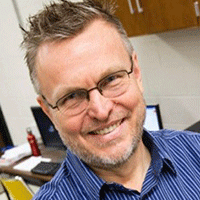
Dr. Yuris Dzenis
ASME 2020 IMECE Technical Chair
Chair of ASME's Nondestructive Evaluation Diagnosis Prognosis Division,
University of Nebraska-Lincoln
Moderator
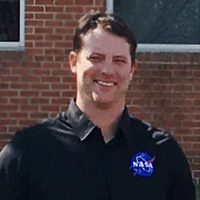
Eric Burke
Nondestructive Evaluation Program Manager, NASA Office of Safety and Mission Assurance
Panelist
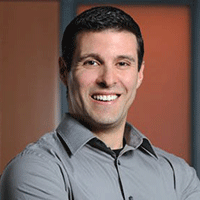
Dr. Caglar Oskay
CMMI, NSF
Panelist
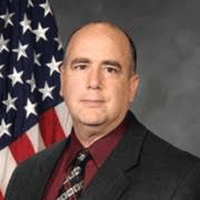
Dr. Jaimie Tiley
Oak Ridge National Lab
Panelist
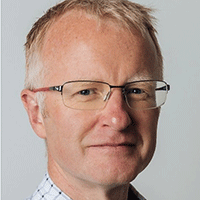
Dr. Paul Wilcox
UK Research Center in NDE
and University of Bristol
Panelist
Biographies
Dr. Yuris Dzenis is a McBroom Professor of Engineering at UNL. He received his PhD degree in Aerospace Engineering from the University of Texas-Arlington, PhD in Physics and Mechanics of Polymers and Composites from Latvian Academy of Sciences, and MS in Physics (Electrodynamics of Continua) from Latvian University. His research interests are in the areas of advanced composites and structures, high-performance fibers, damage and fracture mechanics, progressive failure and fatigue life prediction, nondestructive evaluation, failure mode recognition, prognostics, and mechanics-based predictive NDE of structural materials and systems. Dr. Dzenis currently serves as an associate editor of the ASME Journal of Nondestructive Evaluation, Diagnostics and Prognostics of Engineering Systems.
Eric Burke is a research and development physicist at NASA Langley Research Center where he serves as the deputy Nondestructive Evaluation (NDE) Program manager for NASA’s Office of Safety and Mission Assurance.
With over 10 years of engineering experience within the NASA community, Burke focuses on the development and application of innovative materials and technologies. He is a Subject Matter Expert in the field of in-situ NDE on Additive Manufacturing (AM) parts and leads NDE activities and research on AM across all of the NASA centers.
Burke also leads the Small Business Innovative Research and Development program for technologies that will apply to future inspection of the International Space Station and deep space vehicles. Recent highlights include the delivery of a single side 3D x-ray system that is being used to scan the heat shield of the Orion spacecraft currently located at Kennedy Space Center. This prototype x-ray system is proving to be a critical piece for inspection of Avcoat® joints for the Orion program.
Burke has received national recognition for excellence in the area of NDE and technology development including the NASA Early Career Achievement Medal and Launch Director's Award. He holds three U.S. patents and has authored or co-authored nearly 20 conference papers. Prior to joining NASA in 2010, Burke worked as a research and development engineer for United Space Alliance and the University of Dayton.
Caglar Oskay, Ph.D., is Director of the Engineering for Civil Infrastructure (ECI) Program at the National Science Foundation (NSF) in the Division of Civil, Mechanical, and Manufacturing Innovation in the Directorate for Engineering. ECI program supports fundamental research in infrastructure materials and architectural, geotechnical and structural engineering that can shape the future of the nation's civil infrastructure. Concurrently, Caglar Oskay is Professor of Civil and Environmental Engineering and (by courtesy) Mechanical Engineering at Vanderbilt University. His research focuses on nonlinear response prediction of heterogeneous materials and structures using computational modeling and simulation. His recent research includes characterization of the failure response of systems that involve multiple temporal and spatial scales, computational method development, and reduced order modeling for composites, polycrystalline materials and metamaterials subjected to fatigue, impact, blast and other extreme loading and environmental conditions. Prof. Oskay was named Chancellor Faculty Fellow at Vanderbilt University in 2016, Fellow of ASME in 2017 and Fellow of the Engineering Mechanics Institute in 2019. Prof. Oskay serves on the Executive Committees of the ASME Materials Division and US Association of Computational Mechanics (USACM). He is the Associate Editor of the Journal of Applied Mechanics and the International Journal for Multiscale Computational Engineering.
Dr. Jaimie Tiley is a materials and manufacturing researcher with over 35 years of government service across many organizations. He has accumulated a broad experience base that includes team leadership and program execution at multiple organizational levels. This includes building and executing engineering and research programs at Logistics Centers, Product Centers, HQ AFRL and private industry, in close collaborations with the Department of Energy, Department of Defense, and many academic institutions. He is currently serving as Section Head for the Materials Structures and Processing Section within the Materials Science and Technology Division of Oak Ridge National Laboratory. Duties involve managing the Materials for Advanced Manufacturing, Alloy Behavior and Design, Materials Processing, and Materials Joining and Welding research groups and laboratories. This includes executing advanced research on microstructure evolution within high temperature metal and ceramic materials.
He is the former Team Lead and Program Officer for the Air Force Office of Scientific Research where he worked as the Portfolio Manager for the Multiscale Structural Materials Program, and the Low Density Materials Program. In addition, he served as Section Lead for the Engineering and Information Science Branch and Chair of the Structural Materials Working Group. Duties included developing and executing materials related research directions in support of AF mission requirements. This included establishing collaborative agreements and projects with government, academic, and industry partners aimed at sharing facilities, materials, expertise, and transition opportunities. He has led multiple material development programs during his research activities, including the Metals Affordability Initiative, the Institute for Science and Engineering Simulation, and the Center for Aerospace Manufacturing Technologies. Dr. Tiley has BS and MS degrees from Wright State University in Systems Engineering, an MS degree from the Air Force Institute of Technology in Environmental Engineering and Management, an MS degree from Ohio State University in Materials Engineering, and a PhD in Materials Science from Ohio State University, where he worked on modeling microstructure properties in titanium alloys. He is a graduate of Air War College and a Fellow of ASM International.
Dr. Paul Wilcox was born in Nottingham (UK) in 1971. He received an MEng degree in Engineering Science from the University of Oxford (Oxford, UK) in 1994 and a PhD from Imperial College London (UK) in 1998. He remained in the Non-Destructive Testing (NDT) research group at Imperial College as a Research Associate until 2002, working on the development of guided wave array transducers for large area inspection.
Since 2002 Prof. Wilcox has been with the Department of Mechanical Engineering at the University of Bristol (Bristol, UK) where his current title is Professor of Dynamics. He held an EPSRC Advanced Research Fellowship in Quantitative Structural Health Monitoring from 2007 to 2012 and was Head of the Mechanical Engineering Department from 2015 to 2018. He has been a Fellow of the Alan Turing Institute for Data Science since 2018 and is currently the Academic Director of the UK Research Centre for NDE (RCNDE). In 2015 he was a co-founder of Inductosense Ltd., a spin-out company which is commercialising inductively-coupled embedded ultrasonic sensors. His research interests include array transducers, imaging, embedded sensors, long-range guided wave inspection, structural health monitoring, elastodynamic scattering, signal processing, and machine learning.